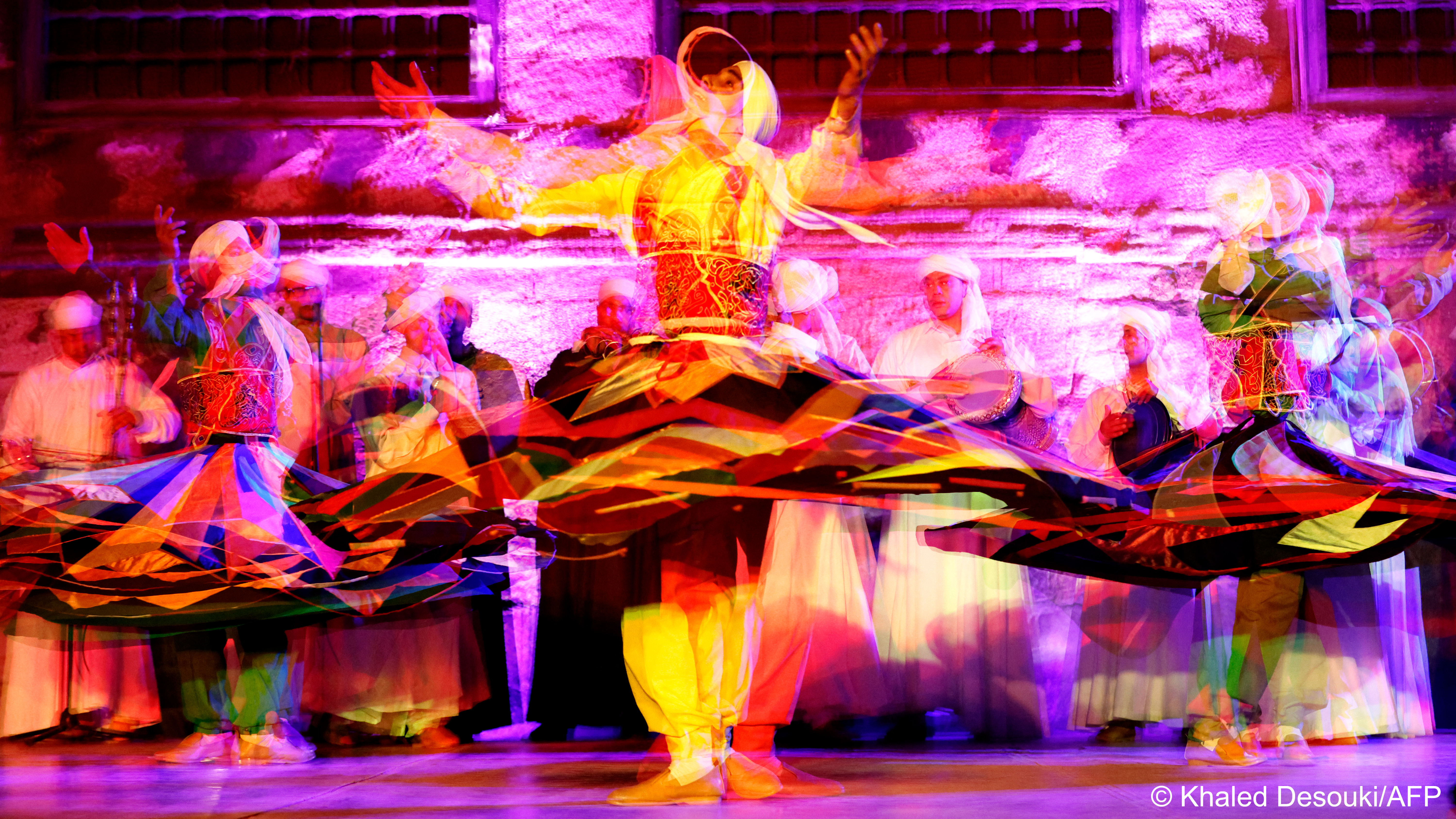Egypt's tanoura puts kaleidoscopic spin on dervish tradition

Born into a lineage of whirling dervishes, Mohamed Adel, 20, takes great pride in the uniquely Egyptian interpretation of the centuries-old ritual known colloquially as "tanoura", or skirt in Arabic.
"I choose the colours and the shapes that are sewn into the skirts," Adel said, pointing to the folds of his purple skirt with green and yellow appliques moments, before stepping on stage to perform at a folk art festival.
The kaleidoscopic performance is a world away from the UNESCO-listed whirling dervishes of Turkey, who trace their origins to the teachings of Sufi poet and mystic Jalal al-Din Rumi.
Distinguished by their white robes, camel-wool hats and fealty to ascetic Sufi spiritualism, the ceremonies in Turkey bear only a fleeting resemblance to the psychedelic performances popular in Egypt.
Sufis in Egypt, who number more than 15 million, with nearly 80 different orders, adopted the ritual, progressively adding colours and rhythms, turning the spiritual practice into a folkloric art in its own right.
'Escape'
Every time it is the same: Adel steps into a counter-clockwise twirl. As his skirts bloom, he raises his right arm to the sky, to receive divine blessing, and reaches his left arm to the ground, delivering the blessing to the public.
Then he picks up the pace. His steps grow faster, and he unties the cords that hold his different skirts together, raising one high above his head.
The topmost tanoura represents the sky, the one below the earth.
As he spins the first above his head, with the other forming an undulating disc around his waist, he recounts the story of Genesis, and how the sky and Earth were separated.
This rendition is no small feat, with each skirt weighing nearly 10 kilograms. If Adel deviates from his axis or loses the rhythm of his feet, he can fall and drop them.
"At the beginning, of course I would get dizzy and even fall sometimes," he admitted. "But training every single day, either on stage or at home, I escape somewhere else with the music."
To the sound of Sufi chants, percussion beats, or the haunting melodies of the traditional flute or rababa – a lute-like string instrument – the revolutions of the dervishes of the Giza Troupe for Folkloric Arts seem as unstoppable as the planets.
'Like flying'
Side by side, but without their skirts ever coming in contact, they perform acrobatics as they spin.
They throw their skirts above their heads, catch them mid-air, fold and unfold the flag of their Sufi order, their spirals never ceasing.
For Ali Morsi, 25, it is a labour inspired by "the love of God and the Prophet Muhammad".
Though the Egyptian version of the art has become a festive occasion, most practitioners hold to the roots of the ritual in the mystical tradition of the Muslim Mevlevi order, founded in the 13th century by Rumi in Konya, present-day Turkey.
Today, it is a staple of Egyptian tourism, with some dancers, particularly in hotels and entertainment venues, attaching lights to their skirts for an added surprise factor, to the delight of tourists and spectators.
Both spectacle and ritual, tanoura is indispensable for artists like Adel and Morsi, who cannot imagine making their living any other way.
"It's like I'm flying, I can no longer feel my body, I am no longer on earth," said Morsi, who has been a dervish for 11 years. "I only think of God and nothing else." (AFP)
